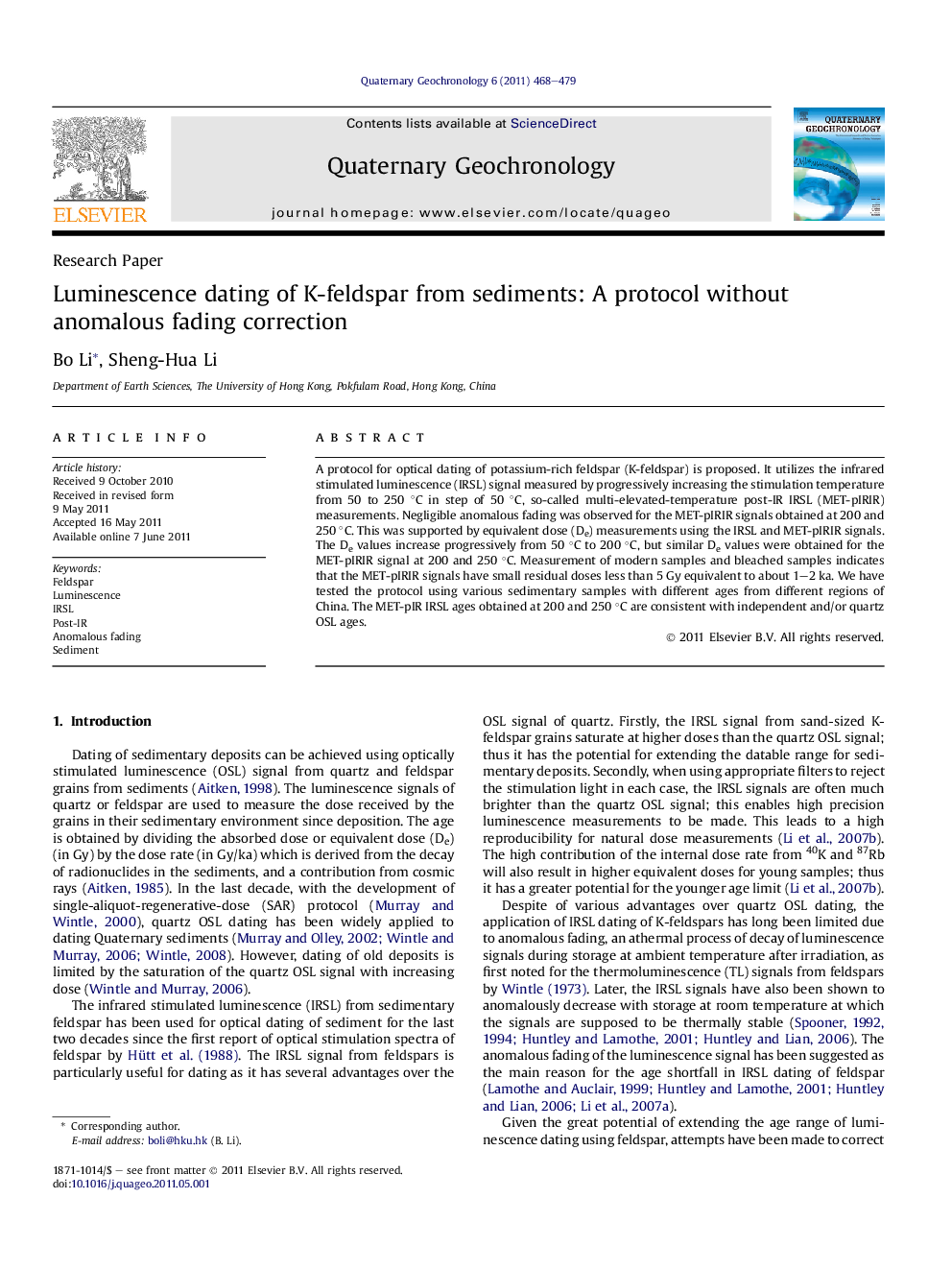| Article ID | Journal | Published Year | Pages | File Type |
|---|---|---|---|---|
| 4725277 | Quaternary Geochronology | 2011 | 12 Pages |
A protocol for optical dating of potassium-rich feldspar (K-feldspar) is proposed. It utilizes the infrared stimulated luminescence (IRSL) signal measured by progressively increasing the stimulation temperature from 50 to 250 °C in step of 50 °C, so-called multi-elevated-temperature post-IR IRSL (MET-pIRIR) measurements. Negligible anomalous fading was observed for the MET-pIRIR signals obtained at 200 and 250 °C. This was supported by equivalent dose (De) measurements using the IRSL and MET-pIRIR signals. The De values increase progressively from 50 °C to 200 °C, but similar De values were obtained for the MET-pIRIR signal at 200 and 250 °C. Measurement of modern samples and bleached samples indicates that the MET-pIRIR signals have small residual doses less than 5 Gy equivalent to about 1–2 ka. We have tested the protocol using various sedimentary samples with different ages from different regions of China. The MET-pIR IRSL ages obtained at 200 and 250 °C are consistent with independent and/or quartz OSL ages.
► We proposed a protocol for dating K-feldspar using the post-IR IRSL signal. ► This protocol measures the IRSL signal by progressively increasing the stimulation temperature. ► We examine the bleachability of the post-IR IRSL signals at different stimulation temperatures. ► We examine the fading rate of the post-IR IRSL signals at different stimulation temperatures. ► We obtained reliable ages for various sedimentary samples from different regions of China.
